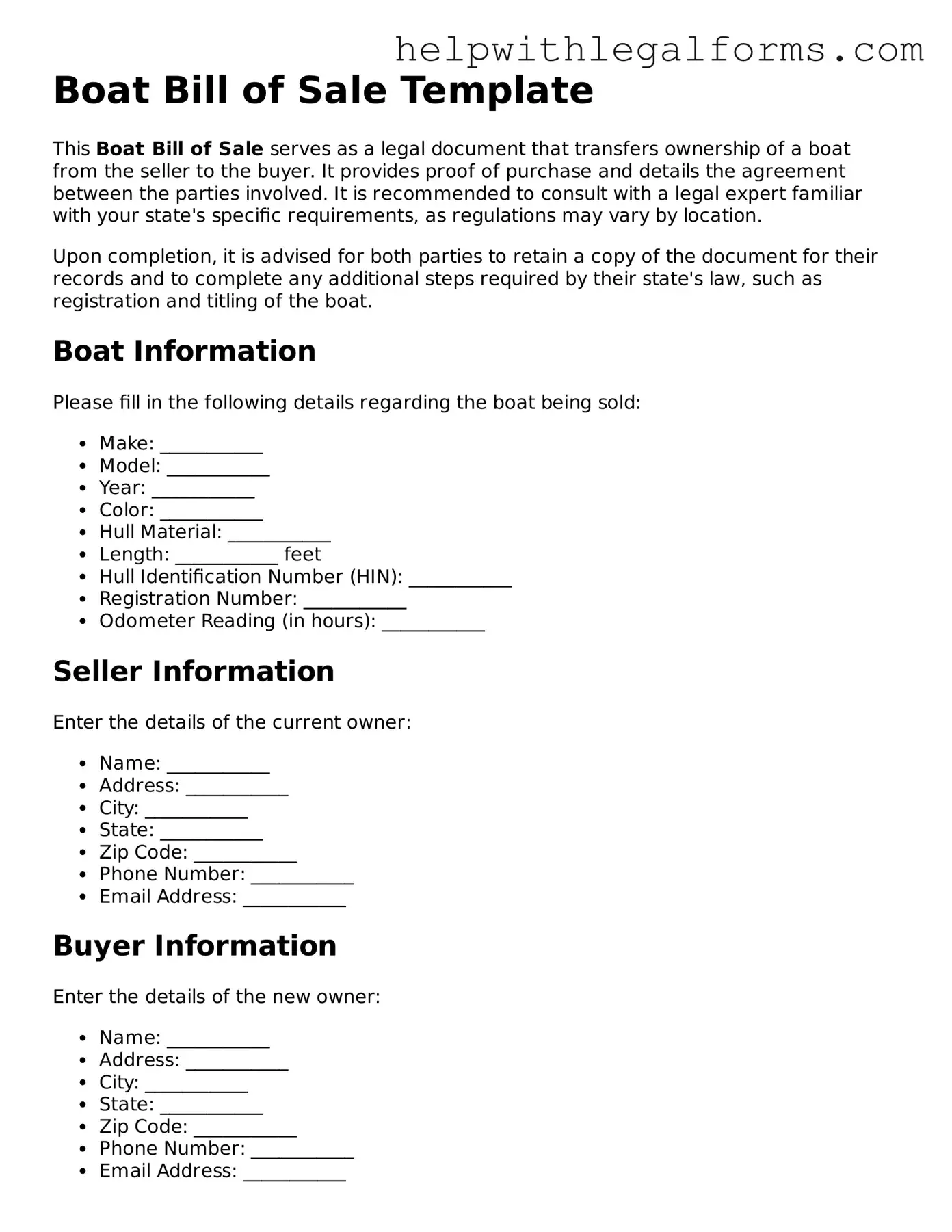What is a Boat Bill of Sale form?
A Boat Bill of Sale form is a legal document that records the transfer of ownership of a boat from the seller to the buyer. It acts as a proof of purchase and includes details such as the make, model, year, price, and identification numbers of the boat, along with the personal information of both the buyer and the seller.
Why do I need a Boat Bill of Sale?
This document is essential for several reasons. It serves as a receipt for the transaction, helps in registering the boat under the new owner's name with the relevant state authorities, and is often required for tax purposes. Additionally, it provides legal protection for both the buyer and the seller if any disputes or questions regarding the boat's ownership arise after the sale.
What information should be included in a Boat Bill of Sale?
A comprehensive Boat Bill of Sale should include the boat's make, model, year, hull identification number (HIN), the sale price, the date of sale, and any included warranties or "as is" sale condition. It should also contain the names, addresses, and signatures of both the buyer and seller, along with the notary public's signature if required.
Is a notary required for a Boat Bill of Sale?
Whether a notary is required can vary by state. Some states require the Boat Bill of Sale to be notarized to increase the document's legal credibility, while others do not. It's vital to check the specific requirements of the state where the boat will be registered.
Can I write my own Boat Bill of Sale?
Yes, you can write your own Boat Bill of Sale. However, it's important to ensure that it contains all the necessary information and meets your state's requirements. Many states provide official forms online. Alternatively, you can use a professionally drafted template to ensure all pertinent details are included.
What's the difference between a Boat Bill of Sale and a title?
A Boat Bill of Sale is a document indicating a transaction and transfer of ownership, while a title is a legal document that proves ownership of the boat. Think of the bill of sale as a detailed receipt of the transaction; the title is what you use to register the boat in your name with the state.
Do I need to register my boat after buying it?
Yes, in most cases, you need to register your boat with the state's boating authority after purchasing it. The requirements and process can vary by state. Typically, you'll need the Boat Bill of Sale, proof of payment of sales tax, and possibly a title or previous registration documents.
How can a Boat Bill of Sale protect me?
A Boat Bill of Sale can offer legal protection by serving as proof of the transaction's terms and conditions, including any warranties or "as is" agreements. For buyers, it provides proof of ownership transfer. For sellers, it can help prove that they are no longer liable for the boat's use or condition after the sale.
Can I sell a boat without a Boat Bill of Sale?
Selling a boat without a Boat Bill of Sale is not advisable. While technically possible in some situations, not having this document can lead to significant complications. These complications can include issues with transferring ownership, future liability disputes, and difficulties in proving the sale's validity or terms.
